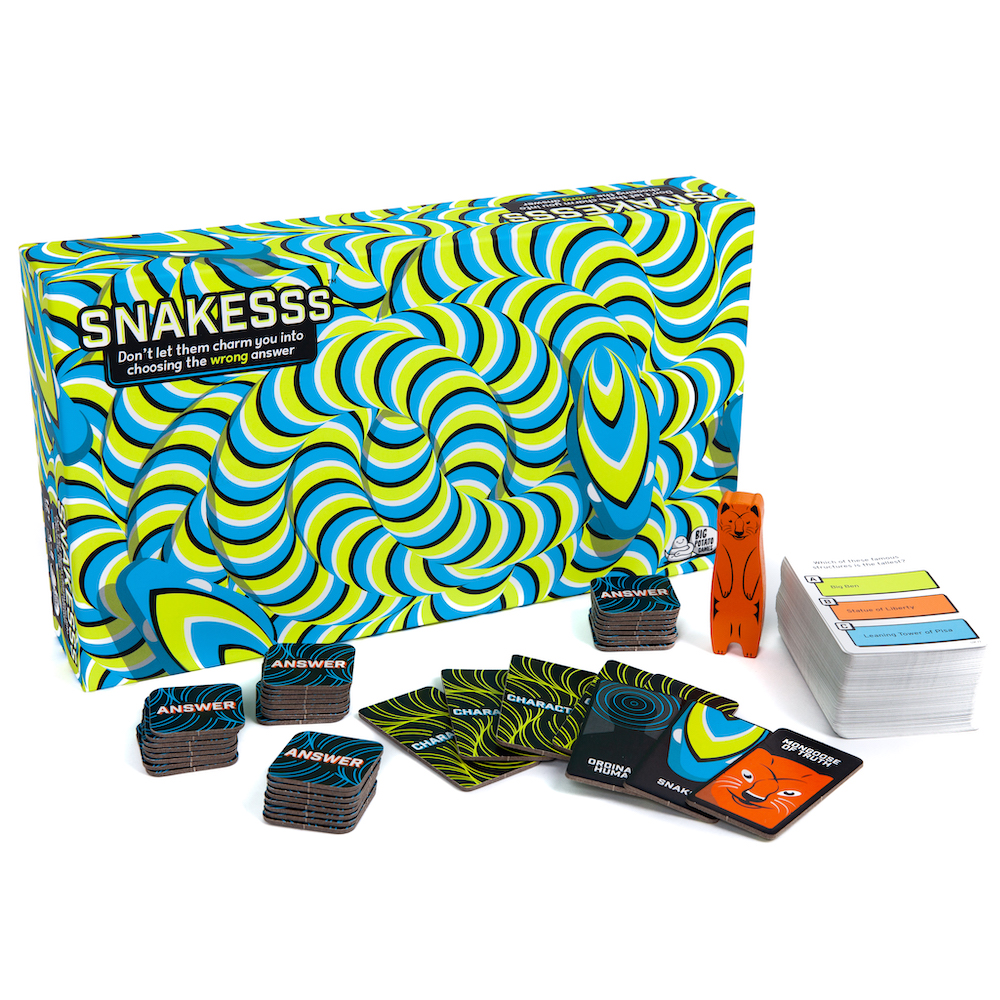How Big Potato Games won big with consumer insights

Introducing insights into their business has opened up a world of opportunity for board game brand Big Potato Games.
When should a brand invest in consumer research? It’s often something startups want to do but don’t always make a priority – as was the case at Big Potato Games, makers of board games like Mean Girls, Rolling Stone and Blockbuster.
While Head of Marketing Becky McKinlay had long desired insight into the brands’ target consumers, she hadn’t previously had the budget. That changed when a new managing director came on board and agreed to an extensive consumer profiling piece, both in the UK and in the US.

“I guess before that, we’d kind of almost been making assumptions about who our customers were,” she says. “We were using loose bits of data via our social media profiles and Google Analytics but it really doesn’t tell you enough. So for us, the research was to set in stone who our current customers are, and to learn who the potential ones to go after are.”
The project explored people’s attitudes towards board games and what motivates them to play, with the aim of ultimately defining key customer personas. They discovered seven distinct customer types – from the hardcore board gamers that buy and play frequently as a hobby, to the more casual gamers who have different reasons for playing.
Says McKinlay: “Mums, for example, see us very much as a way of getting all their family together or getting the kids to have a break from screen time, especially with the pandemic.
“Another segment we identified was young adults. So, again, casual gamers, but for them, it’s all about spending time with friends. While these findings weren’t exactly surprising, they were really huge pieces of information, telling us more about how to cater to, or how to position things towards those markets.”

Sizing up the opportunity
The consumer profiling exercise hasn’t only helped Big Potato Games to define who their consumers are, it’s also helped them understand the size of each segment and their importance.
“If you take the hardcore gamers, they’re important, but they’re niche and quite small. And while we want to keep talking to them and maintaining that segment, the mums are just so much bigger. That is one segment where we really want to grow awareness.”
We found out interesting extra details, like board game enthusiasts are much more likely to back something on Kickstarter.
Thanks to including questions to measure brand awareness in their survey, McKinlay says they’ll be able to see if they make progress towards their goals.
“We asked respondents if they’d heard of us or played one of our games. Awareness for us was a lot higher among board game enthusiasts, and the percentage that had played one of our games was higher. With the more mainstream, casual segments, both were lower. It was good to see that and to be like, ‘right, well, we want to dial those up a notch’. If we revisit this survey in a year or two, we’ll want to see awareness has gone up with those audiences.”
Something else Big Potato Games gained from consumer profiling was insight into where people go to buy board games. This underlined the importance of ecommerce for the brand (who sell in stores, as well as on Amazon and D2C through their website) but also highlighted some other opportunities.
“While all segments are largely shopping online, we found out interesting extra details, like board game enthusiasts are much more likely to back something on Kickstarter and buy from certain small independent stores.”

Turning percentages into people
Now that Big Potato Games have a wealth of information about their consumers, they’ve started to build out four key profiles – attaching names to each persona and adding flesh and bones to their descriptions.
These customer profiles will be used across the company to guide everything from new product development through to marketing, distribution and pricing.
“We’ll now be able to say to our creative team, ‘we want to make a game for this person,’ and they’ll be able to see from the profile what type of game they enjoy. Or they might see that the environment is really important to this person or what kind of price they’d be willing to pay. For example, we discovered keen board gamers are happy to spend a lot more than the casual segments.”
It’s really handy in terms of choosing what channels we use to target that customer, instead of basing it on assumptions.
While Big Potato Games are yet to complete their consumer profiling work, they have already started to put their learnings into practice. One interesting theme to emerge when they probed respondents about what would motivate them to purchase a board game in future was sustainability. The brand have already started developing plastic-free games, so this confirmed that they’re heading in the right direction.
What’s more, when they’re ready to take these new games to market, McKinlay says they’ll know exactly where to advertise to reach their target customers.
“Now we can go to media planners and say, okay, so we have this customer, and this is who we want to target this game at. What works for this demographic? Is it TV? Is it out of home or is it social media? So it’s really handy in terms of choosing what channels we use to target that customer, instead of basing it on assumptions.”
Converted to consumer research
Big Potato Games have discovered so many benefits through consumer profiling, McKinlay now wonders how they got by without it.
“I’m a bit like, ‘wow, I can’t believe we didn’t have this before,’” she says. “But you do need some budget to put behind it, which small startups might not have. We started with just three people and we’ve grown slowly over the last seven years. There are now 40 of us. In a sense, it’s cool starting to work with consumer insights now because you can see the company is growing and maturing.”
McKinlay says the consumer profiling they carried out with Attest was far from a one-off exercise and that Big Potato Games will continue to try to understand more about their consumers.
I’m a bit like, ‘wow, I can’t believe we didn’t have this before.’
“With audience insights, I don’t think it’s something that you can just do once and be like, ‘that’s it, we know who our audience is,’ because things change, people change, trends change. We always need to be revisiting it.
“Even if you find the profiles don’t change too much, you might find that there could be opportunities elsewhere. For example, in June, off the back of COVID, we adapted some of our games so that you can play them over Zoom. It’s that type of thing; always making sure that if there’s a certain space where games are growing, we understand how we can then cater to that.”
For companies that are on the precipice of investing in consumer research, McKinlay concludes that it’s well worth it: “I think you’d be silly not to if you’ve got the resources. I do think a key part of a business is knowing your customer.”
Tell us what you think of this article by leaving a comment on LinkedIn.
Or share it on:
